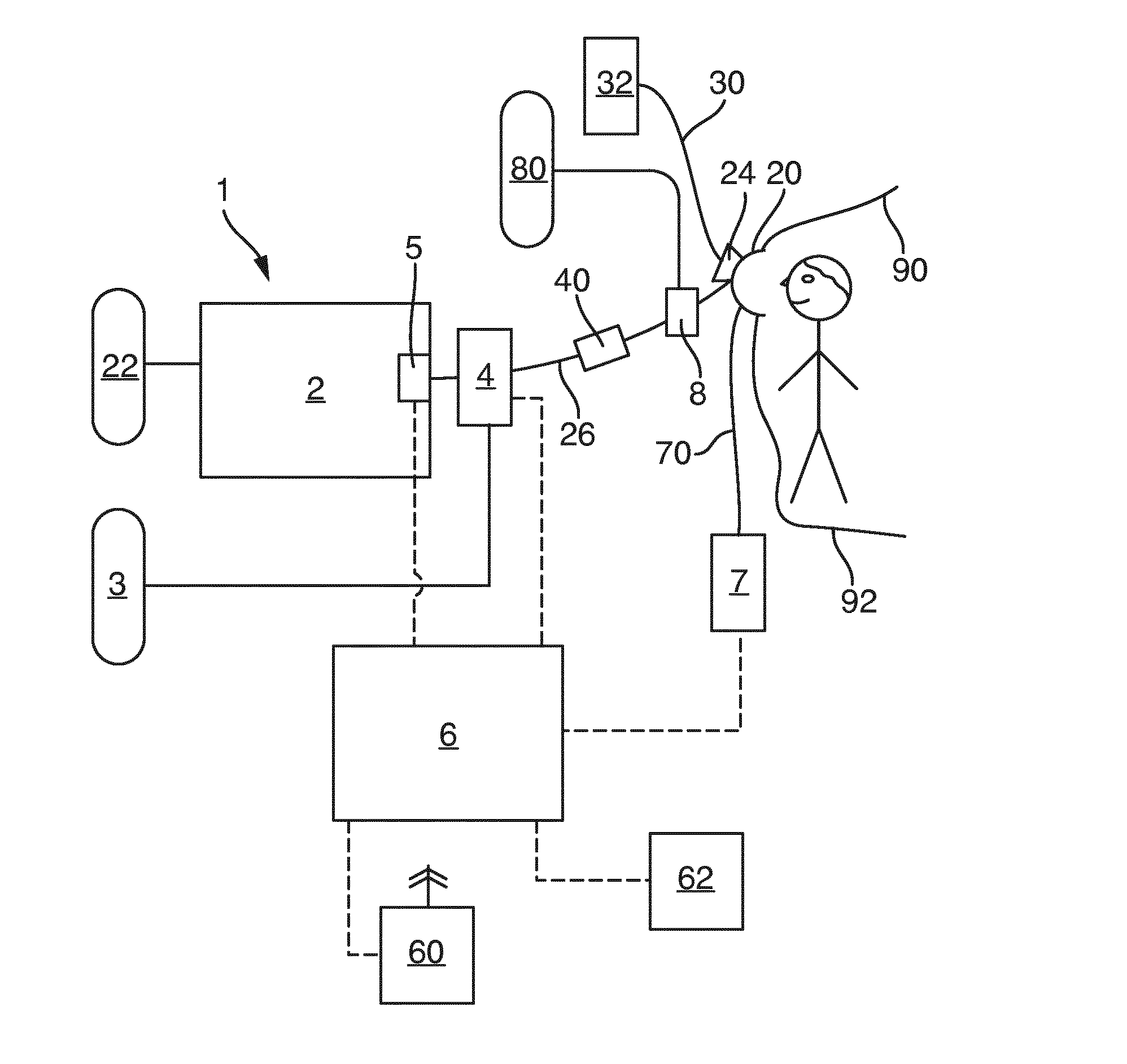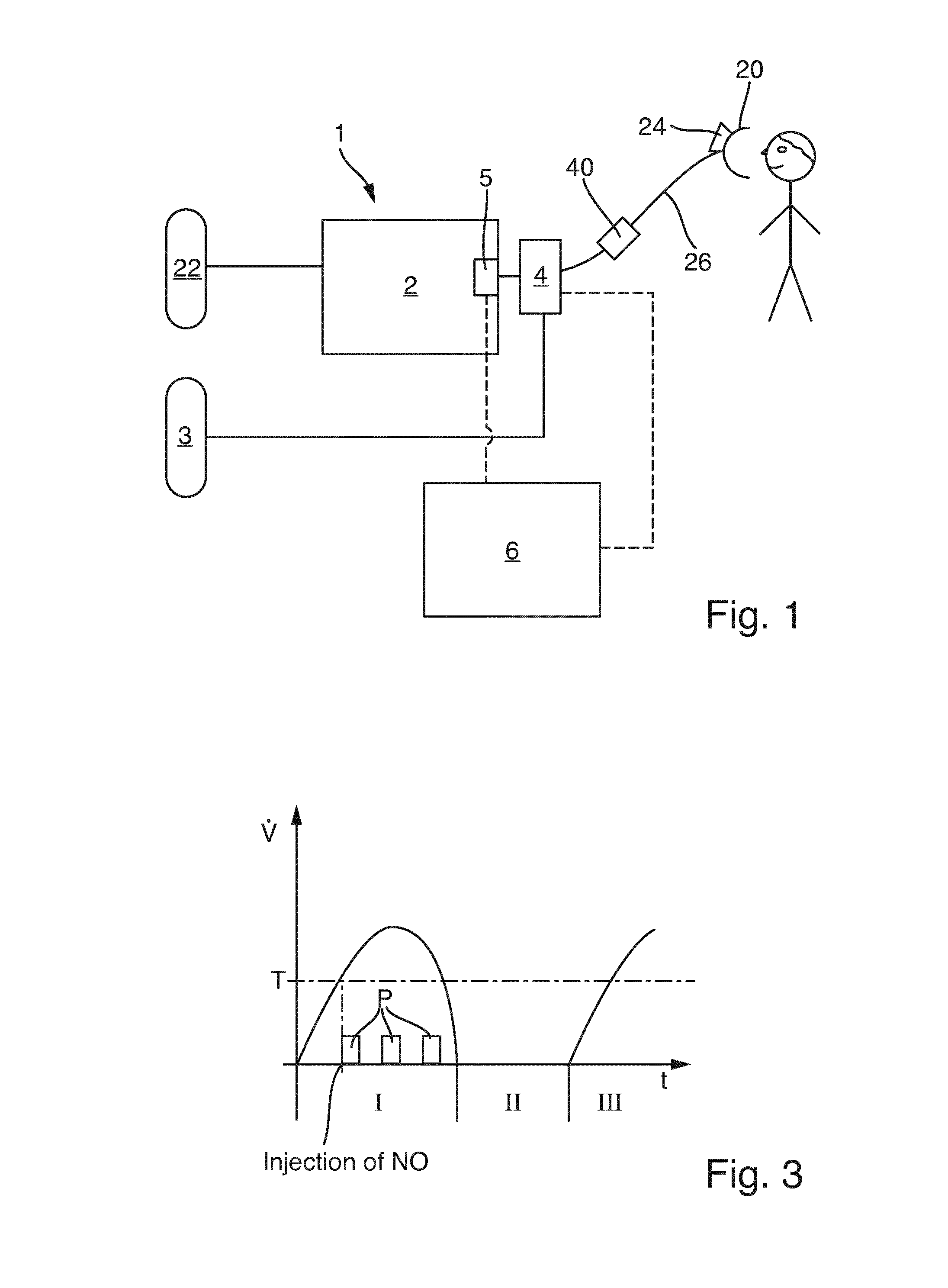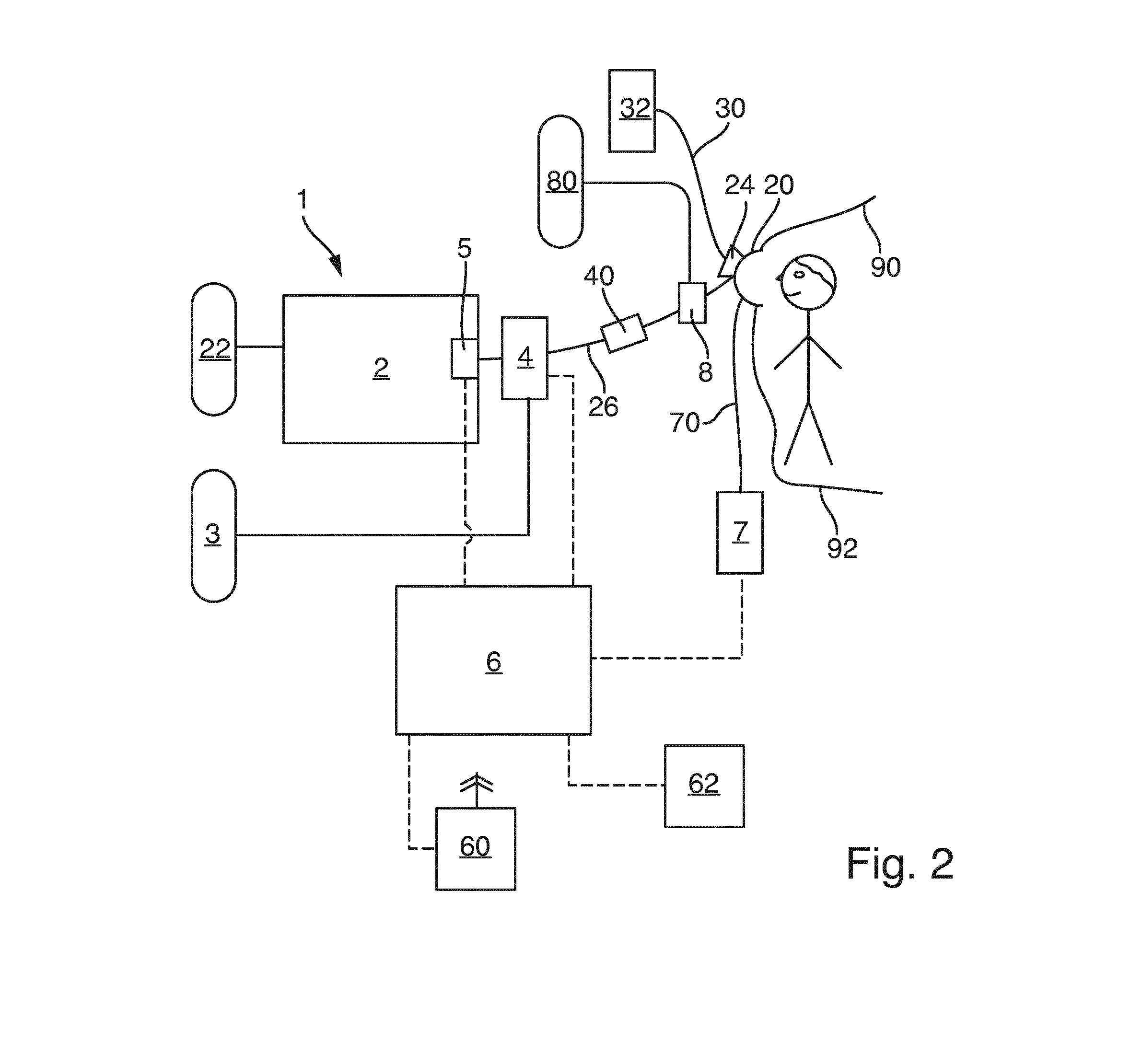Device for the treatment of, treatment of complications arising from, and/or prevention of respiratory disorders caused by bacterial, viral, protozoal, fungal and/or microbial infections, preferably for the treatment of complications arising from cystic fibrosis
a technology for respiratory disorders and devices, applied in the field of devices for the treatment of, treatment of complications arising from, and/or prevention of respiratory disorders caused by bacterial, viral, protozoal, fungal and/or microbial infections, can solve the problems of generating excessive quantities of toxic no, difficult to introduce no into biological systems, and releasing insufficient oxygen to tissues, etc., to achieve superior treatment results and increase the effect of bacteria
- Summary
- Abstract
- Description
- Claims
- Application Information
AI Technical Summary
Benefits of technology
Problems solved by technology
Method used
Image
Examples
Embodiment Construction
[0066]In the following, the invention will be explained in more detail with reference to the accompanying Figures. In the Figures, like elements are denoted by identical reference numerals and repeated description thereof may be omitted in order to avoid redundancies.
[0067]In FIG. 1 a device 1 for the treatment of, treatment of complications arising from, and / or prevention of respiratory disorders caused by bacterial, viral, protozoal, fungal and / or microbial infections, preferably for the treatment of complications arising from cystic fibrosis is schematically shown.
[0068]The disorders to be treated by means of the device 1 are preferably selected from the group consisting of: a ventilator associated pneumonia (VAP), a toxoplasmosis, a heparin-protamine reaction, a traumatic injury, a traumatic injury to the respiratory tract, acidosis or sepsis, acute mountain sickness, acute pulmonary edema, acute pulmonary hypertension, acute pulmonary thromboembolism, adult respiratory distress...
PUM
 Login to View More
Login to View More Abstract
Description
Claims
Application Information
 Login to View More
Login to View More - R&D
- Intellectual Property
- Life Sciences
- Materials
- Tech Scout
- Unparalleled Data Quality
- Higher Quality Content
- 60% Fewer Hallucinations
Browse by: Latest US Patents, China's latest patents, Technical Efficacy Thesaurus, Application Domain, Technology Topic, Popular Technical Reports.
© 2025 PatSnap. All rights reserved.Legal|Privacy policy|Modern Slavery Act Transparency Statement|Sitemap|About US| Contact US: help@patsnap.com



